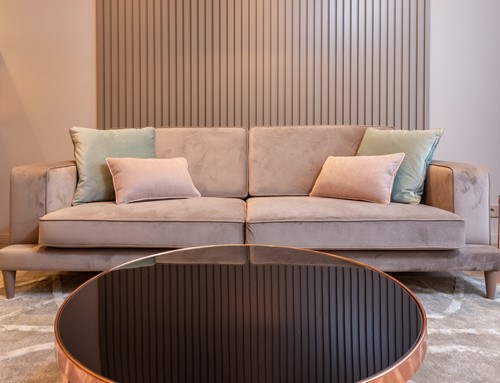
Balance and symmetry are essential elements of interior design. Everything from the arrangement of furniture to the art on the walls can affect the symmetrical balance of the space and create entirely different aesthetics. Here is a basic guide to the different types of symmetry and balance commonly used in interior design:
Symmetrical balance
Symmetrical balance is the most popular variety used by designers. It's also the easiest to achieve, whether you're working horizontally or vertically. Symmetrical balance is common in square and rectangular-shaped spaces and is a hallmark of traditional design styles.
A simple example would be two chairs separated by an accent table, or two sofas with a coffee table in between. Formal dining rooms are a perfect way to explore symmetrical balance, especially when working with architectural characteristics like windows.
Asymmetrical balance
Asymmetrical balance is more difficult to achieve but can make a dynamic impact. When using asymmetrical balance in interior design, the results are usually more casual. Not only does this make it a popular option for small, narrow or oddly shaped rooms, but it also lends itself to a wider variety of “informal” design styles.
An example of asymmetrical balance might be arranging heavier, larger furniture pieces all together on one side of the room, and the smaller, lighter pieces on the other. To make the room feel balanced, designers incorporate bold colors, patterns or additional decor to the lighter side.
Radial balance
Radial balance is often blended with both symmetrical and asymmetrical balance to add round pieces harmoniously into designs. A basic description would be objects rotated to face the same direction around one central point.
For example, a round dining table with an odd number of chairs would exhibit radial balance rather than symmetrical. Spiral staircases, round kitchen islands and circular windows on walls or front doors are other examples of radial balance in context.
About the Author

John Hassler
Our goal is overcoming the housing challenge and getting to know one another, here is a bit about me. Providing you with professional guidance for buying and selling homes stems from an in-depth knowledge of the Twin Cities Best Homes and Neighborhoods. For us, the process is a simple one and starts with a conversation about your needs, desires and concerns. No contracts or promises up front. I ask only for the opportunity to understand your housing needs and have you become comfortable with my real estate knowledge and experience. I have lived throughout the metro area, have sold close to 1000 homes as well as built, remodeled and designed homes. My passion is assisting you in discovering that perfect home, location and setting that will bring you and your family pleasure and comfort for years to come. I would enjoy the opportunity to meet with you at your home, business or over a cup of coffee. I am readily available by email, text and enjoy a phone call as well. Please don’t hesitate to contact me, as I always enjoy a new opportunity to help someone!
